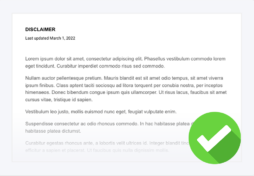A views expressed disclaimer informs readers that the opinions and thoughts expressed on an online platform reflect only the author’s views.
Read on to see views expressed disclaimer examples, learn when to use them, and find out how to create your own.
What Is a Views Expressed Disclaimer?
A views expressed disclaimer, also known as an opinion disclaimer, is a statement saying the opinions expressed within the content are solely the author’s and do not reflect the opinions and beliefs of the website or its affiliates.
Individuals can also use an opinion disclaimer to post on different platforms and distance their opinion from that of their employer or any other organization.
When Do You Need a Views Expressed Disclaimer?
If your organization accepts guest posts, editorial columns, or commentary, a views expressed disclaimer is essential.
It allows your company to post a wide variety of opinions and host open discussions without being liable for what your users say or imply.
An opinion disclaimer statement can protect you from potential backlash and legal liability that may result from:
- False facts
- Errors
- Controversial opinions
If your organization provides a platform for other individuals to post their opinions, be it a blog post, video, or social media post, you should have a views expressed disclaimer on the site.
Views Expressed Disclaimer Examples
You’ve probably seen many opinion disclaimer statements before — they’re on podcasts, YouTube videos, and media publications.
Let’s take a look at three of the most common types of views expressed disclaimer examples:
1. Views Expressed Video Disclaimer
Harvard Medical School provides an ideal example of a views expressed video disclaimer for its Video Library. It clearly differentiates between the content creator’s and the School’s opinion.
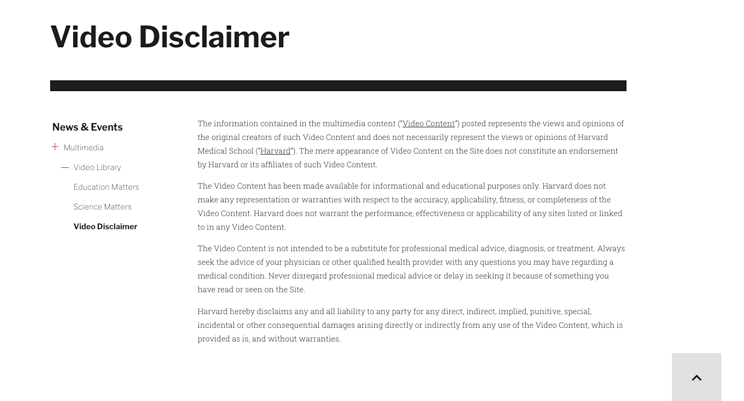
Harvard uses an opinion disclaimer along with others, such as a no responsibility disclaimer, to provide readers with comprehensive information. Everything is laid out right in front of them, leaving no room for loopholes or guesswork.
Views Expressed Program Disclaimer
This is CNBC’s version of the generic “the views expressed in this program…” disclaimer, used for the channel’s Futures Now program. It lets the audience know that the participant’s opinions are not the same as CNBC or its affiliates.
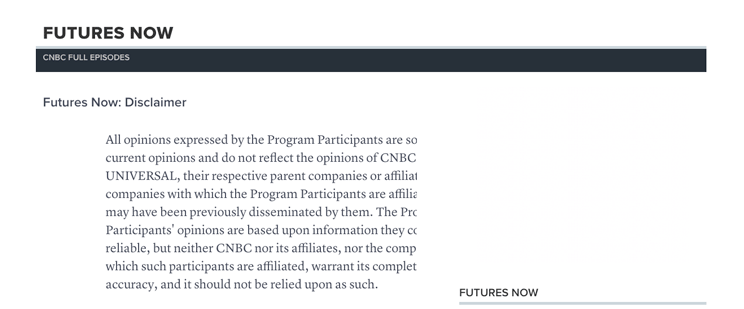
Another excellent example of an opinion disclaimer is provided by Dr. David Puder’s Psychiatry and Psychotherapy podcast:
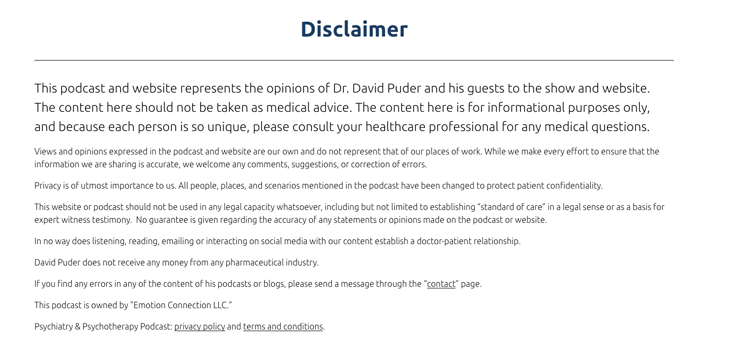
The disclaimer covers both Dr. Puder and his guests and clearly states that the opinions are solely their own.
This disclaimer also includes a medical advice disclaimer which informs listeners that what’s discussed on the podcast shouldn’t be taken as medical advice.
Views Expressed Social Media Disclaimer
Social media is a tricky platform to navigate, so it’s advised that professionals have an opinion disclaimer to protect themselves and their organization from backlash on social media.
Maya Gebeily, The Associated Foreign Press’ Deputy Bureau Chief in Iraq, has an opinion disclaimer on her Twitter account merely stating, “views expressed are my own.”
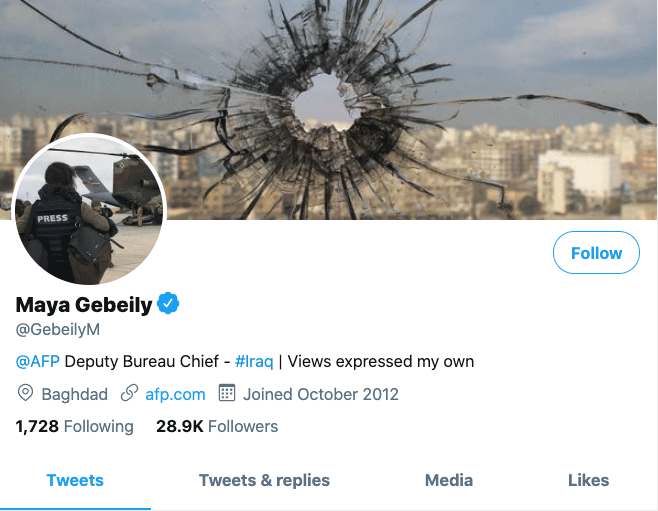
For individuals, views expressed disclaimers can be short and simple like this example. Companies, on the other hand, should include more comprehensive disclaimers.
How to Write a Views Expressed Disclaimer
You can write a views expressed disclaimer for your company by following these steps:
- Clearly state that the views expressed in the content belong to the content creators and not the organization, its affiliates, or employees.
- Create a 1-2 sentence opinion disclaimer that you can include in guest/opinion content.
- Provide a link to your detailed disclaimer page.
Most companies allowing guest content, such as CNBC or Harvard Medical School, have a separate page for disclaimers, which tend to include more than just their views expressed disclaimer.
For individuals, a simple one-line “views expressed are my own” should be sufficient for social media profiles.
Views expressed disclaimers can be displayed on:
- Guest posts or opinion article headers.
- Videos themselves or in the video description.
- Social media platform bio sections or user pages.
- Website footers.
- Dedicate disclaimer pages.
Whether you’re an individual or an organization, your views expressed disclaimer can help limit your liability and separate your opinions from those of other people or entities.
If your website or business requires multiple disclaimers, download and customize our disclaimer template, or use our free disclaimer generator.
Generate a Free Customized Disclaimer Using Termly
Here’s how you can use Termly’s generator to create a custom and legally compliant disclaimer for your needs.
Step 1: Go to Termly’s disclaimer generator.
Step 2: Answer a few simple prompts and questions, and go through all of the steps until you reach “Final Details.”
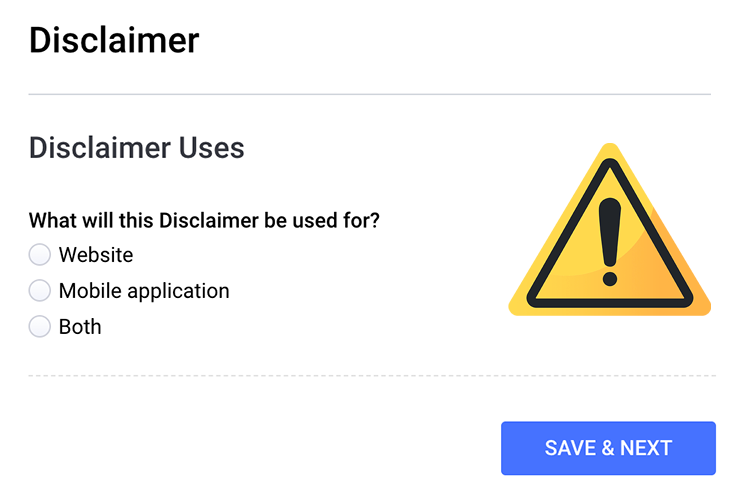
Step 3: Once you’ve filled in everything and you are satisfied with the preview, click “Publish.” You will then be prompted to create an account on Termly so you can save and edit your legal disclaimer further.


